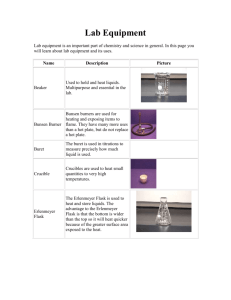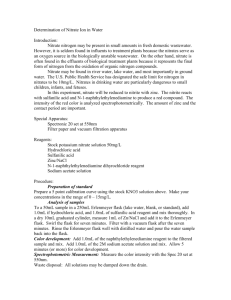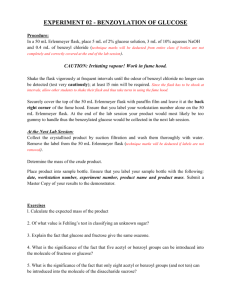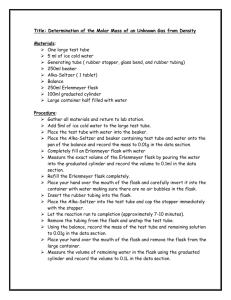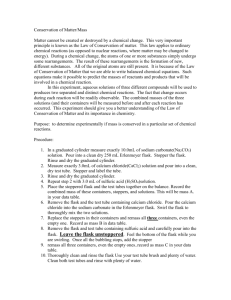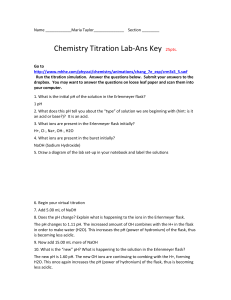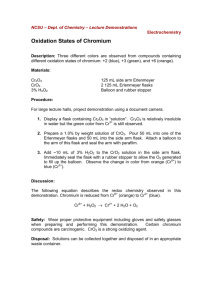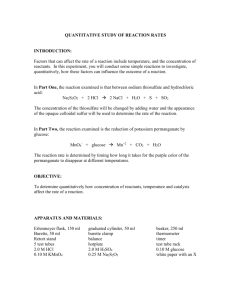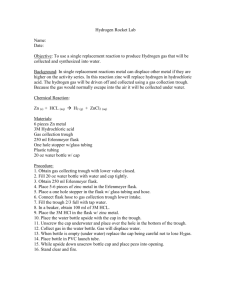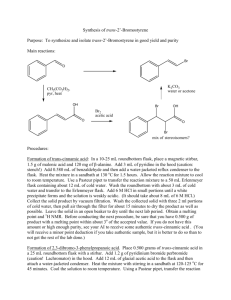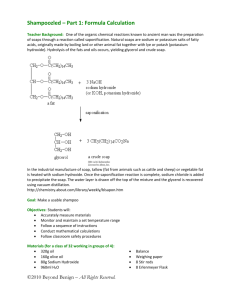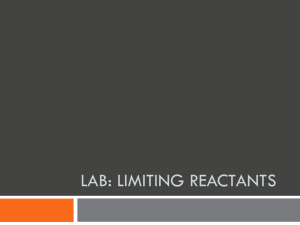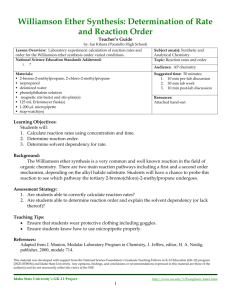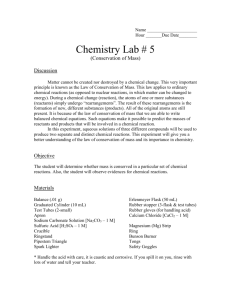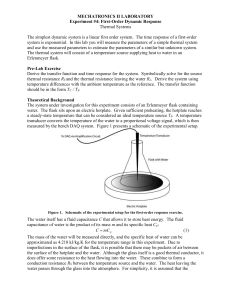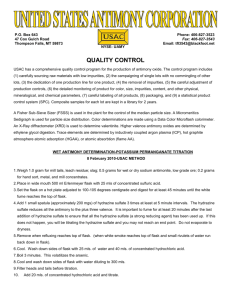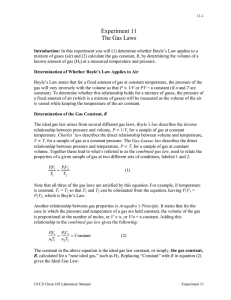Lab: Law of Conservation of Mass
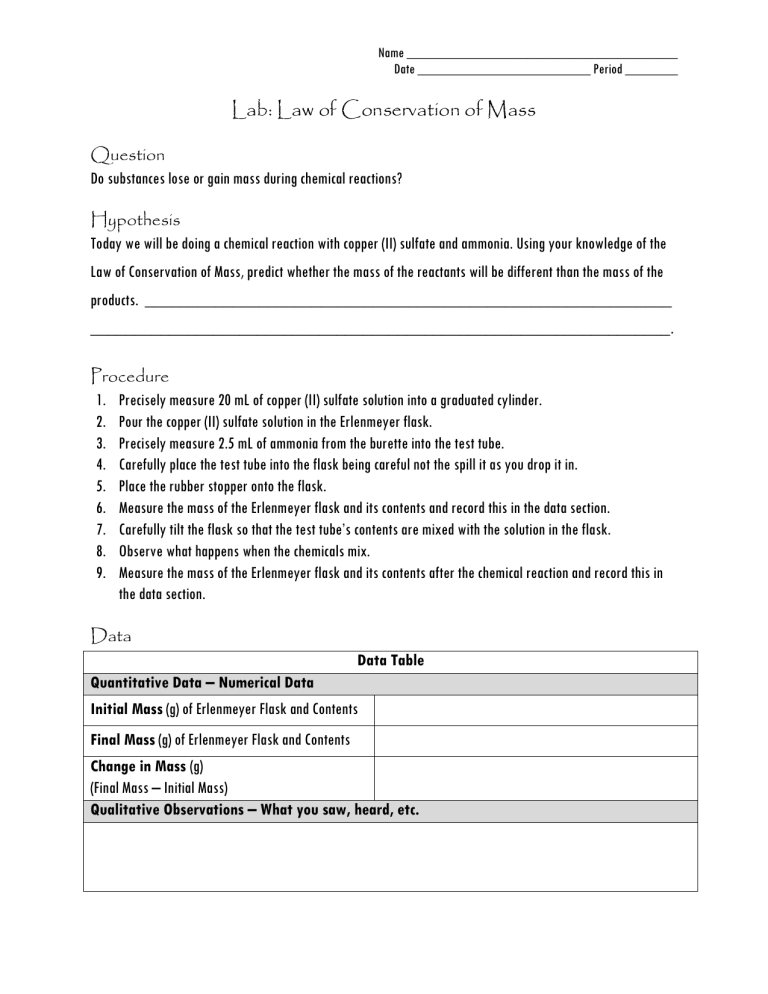
Name ____________________________________
Date _______________________ Period _______
Lab: Law of Conservation of Mass
Question
Do substances lose or gain mass during chemical reactions?
Hypothesis
Today we will be doing a chemical reaction with copper (II) sulfate and ammonia. Using your knowledge of the
Law of Conservation of Mass, predict whether the mass of the reactants will be different than the mass of the products. ____________________________________________________________
__________________________________________________________________.
Procedure
1.
Precisely measure 20 mL of copper (II) sulfate solution into a graduated cylinder.
2.
Pour the copper (II) sulfate solution in the Erlenmeyer flask.
3.
Precisely measure 2.5 mL of ammonia from the burette into the test tube.
4.
Carefully place the test tube into the flask being careful not the spill it as you drop it in.
5.
Place the rubber stopper onto the flask.
6.
Measure the mass of the Erlenmeyer flask and its contents and record this in the data section.
7.
Carefully tilt the flask so that the test tube’s contents are mixed with the solution in the flask.
8.
Observe what happens when the chemicals mix.
9.
Measure the mass of the Erlenmeyer flask and its contents after the chemical reaction and record this in the data section.
Data
Data Table
Quantitative Data – Numerical Data
Initial Mass (g) of Erlenmeyer Flask and Contents
Final Mass (g) of Erlenmeyer Flask and Contents
Change in Mass (g)
(Final Mass – Initial Mass)
Qualitative Observations – What you saw, heard, etc.
Post Lab Questions
1.
Today’s lab involved a chemical reaction. Describe at least two of your observations that are evidence of a chemical change .__________________________________________________
_______________________________________________________________.
2.
How did the final mass of the system compare with the initial mass of the system? Explain your results . __________________________________________________________
______________________________________________________________
3.
For each of equations below, label the reactants and products. Then, answer the question below.
N
2
+ 3H
2
2NH
3
Which of the following statements accurately describes the reaction shown above?
4.
A The mass of the hydrogen gas plus the nitrogen gas is less than the mass of the ammonia.
B The mass of the hydrogen gas is equal to the nitrogen gas plus the mass of the ammonia.
C The mass of the hydrogen gas minus the nitrogen gas is equal to the mass of the ammonia.
D The mass of the hydrogen gas plus the nitrogen gas is equal to the mass of the ammonia.
Write how many of each substance are present after the coefficient has been added:
2N
2
S
4
= ___N + ___S 2MgCl
2
= ___Mg + ___Cl
2AlBr
3
= ___Al + ___Br 3MnO z
= ___Mn + ___O
3BaCl
2
= ___Ba + ___Cl SiS
2
= ___Si + ___S
5.
Solve for each of the unknown masses below.
3g + ?g = 9.5g 3.1g + 8.2g = ?g 4g + ?g = 12.4g
? = _____
2g + ?g = 8.3g
? = _____
5.1g + 3.8g = ?g
? = _____
6.7g + ?g = 9.4g
? = _____ ?= _____ ? = _____
CaCl
2
+ Na
2
CO
3
CaCO
3
+ NaCl
6.
What coefficient values will balance the reaction shown above? (Show your work for each set).
A 2, 1, 2, 1 B 1, 1, 1, 1 C 1, 1, 1, 2 D 1, 2, 1, 1



